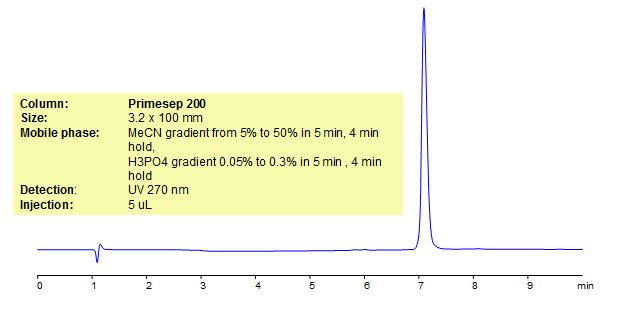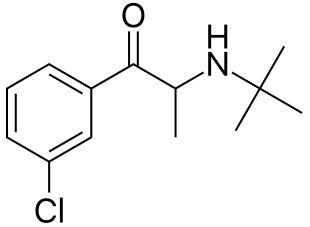| CAS Number | 34911-55-2 |
|---|---|
| Molecular Formula | C13H18ClNO |
| Molecular Weight | 239.740 |
| InChI Key | SNPPWIUOZRMYNY-UHFFFAOYSA-N |
| LogP | 3.12 |
| Synonyms |
|
Applications:
HPLC Method for Analysis of Bupropion
May 3, 2016

Bupropion is monocyclic, aminoketone antidepressant because it is a weak blocker of the neuronal uptake of serotonin and norepinephrine. There side effects to this drug, and those include: stomach pain, dizziness, muscle pain, agitation, insomnia, etc. Primesep 200, a reverse phase column, contains embedded acidic ionizable groups and can retain Valsartan. The method is UV compatible and can be used as a general approach for analyzing similar compounds.
Application Column
Primesep 200
The Primesep family of mixed-mode columns offers a wide variety of stationary phases, boasting unprecedented selectivity in the separation of a broad array of chemical compounds across multiple applications. Corresponding Primesep guard columns, available with all stationary phases, do not require holders. SIELC provides a method development service available to all customers. Inquire about our specially-tailored custom LC-phases for specific separations.
Select options


